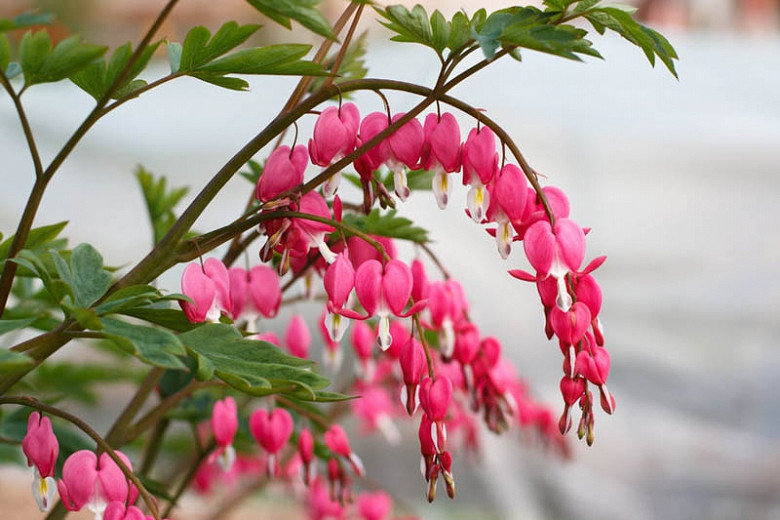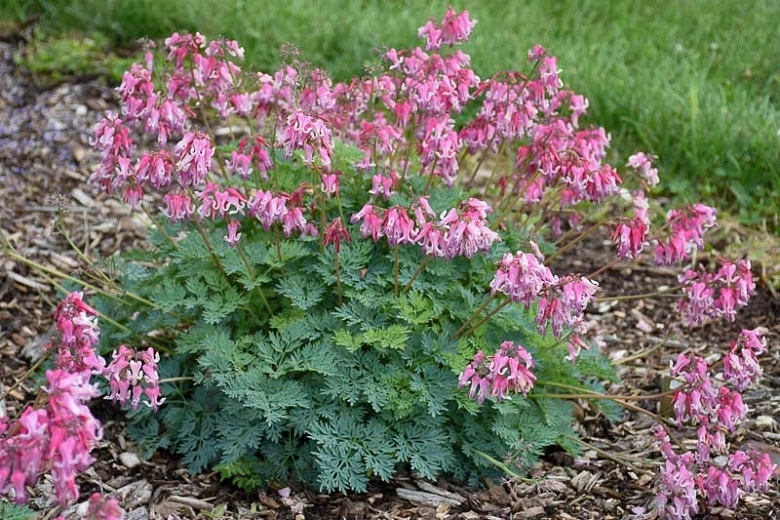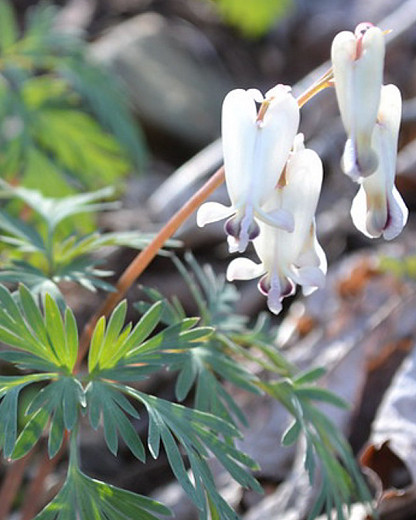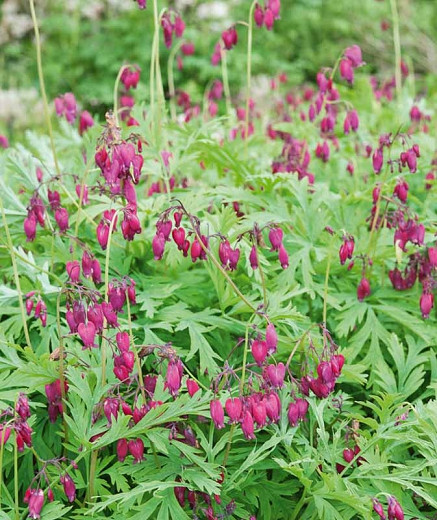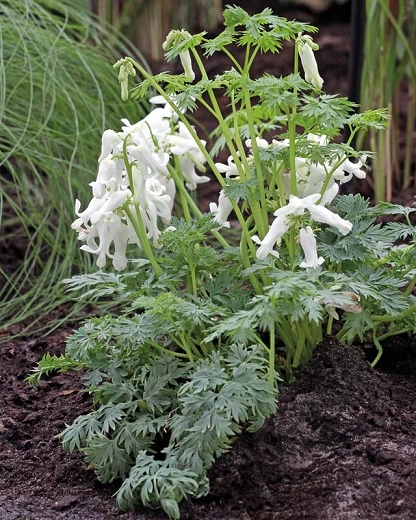Dicentra (Bleeding Heart)
Appealing to most gardeners, Dicentra (Bleeding Heart) are rhizomatous or tuberous perennials with heart-shaped flowers dangling in arching panicles or racemes above attractively divided leaves. Shade tolerant, they bloom over a long season, extending from late spring to early fall, in cooler climates. In hotter climates, flowering will usually stop in the heat of the summer, but may start again when the weather cools in late summer or early fall. Beautiful in leaf as soon as they sprout, they quickly add their charming blooms and make elegant additions to the garden when combined with other shade-loving perennials.
Appealing to most gardeners, Dicentra (Bleeding Heart) are rhizomatous or tuberous perennials with heart-shaped flowers dangling in arching panicles or racemes above attractively divided leaves. Shade tolerant, they bloom over a long season, extending from late spring to early fall, in cooler climates. In hotter climates, flowering will usually stop in the heat of the summer, but may start again when the weather cools in late summer or early fall. Beautiful in leaf as soon as they sprout, they quickly add their charming blooms and make elegant additions to the garden when combined with other shade-loving perennials.
- One of the most spectacular and popular species, Dicentra spectabilis (Common or Old-Fashioned Bleeding Heart) also known as Lamprocapnos spectabilis, grows in 2-3 ft. tall clumps (60-90 cm), and can make substantial specimens with gracefully arching stems studded with lockets of flowers, whose hearts are no doubt bleeding, in shade of pink, white or red. Native to Siberia, northern China, Korea, and Japan, it usually blooms for 4-6 weeks in late spring – early summer and tends to decline or even disappear in mid-summer, leaving a large gap in the border. Great for shaded borders or woodland gardens, plant it among other perennials such as hosta, astilbe, pulmonaria or ferns to fill in the space left by its foliage when going dormant.
- Not as impressive but still very handsome, Dicentra eximia (Fringed Bleeding Heart) and Dicentra formosa (Western Bleeding Heart) as well as their related hybrid cultivars are more compact plants, usually 10-15 in. tall (25-37 cm). Native to the eastern US (D. eximia) and western US (D. formosa), they usually bloom from mid-late spring through the rest of summer and even into fall, depending on summer temperature and rainfall. Their deeply-cut, fern-like, gray-green foliage persists throughout the growing season unlike common bleeding hearts. Great for edging, rock gardens, underplanting shrubs or as a ground cover.
- Easy care, Bleeding Hearts thrive in part shade and are easily grown in fertile, humus-rich, moist, well-drained soils. They are full shade tolerant but be aware that too much shade will result in few flowers. They can be grown in full sun in the coolest part of their range provided the soil is kept consistently moist.
- Bleeding Heart attracts hummingbirds and butterflies, as well as other beneficial pollinators, but it is resistant to deer and rabbits.
- Bleeding Heart is relatively trouble-free, although common garden problems such as aphids and powdery mildew are occasional issues.
- Bleeding Hearts can spread naturally by rhizomes or self-seeding, but they are not considered to be aggressive or invasive.
- All parts of the Bleeding Heart plant may cause stomach upset if ingested by humans. Bleeding Heart plants are also toxic to animals (cattle, sheep, and dogs) as they contain soquinoline alkaloids. The foliage may aggravate skin allergies. Wear gloves and other protective equipment when handling.
Guide Information
| Hardiness | 3 – 9 |
|---|---|
| Plant Type | Perennials |
| Plant Family | Dicentra – Bleeding Hearts |
| Exposure | Partial Sun |
| Season of Interest | SpringSummerFall |
| Water Needs | Average |
| Soil Type | Clay, Loam, Sand |
| Soil pH | Alkaline, Neutral |
| Soil Drainage | Moist but Well-Drained, Moisture Retentive |
| Characteristics | Cut Flowers, Showy |
| Tolerance | Deer, Rabbit |
| Attracts | Butterflies, Hummingbirds |
| Landscaping Ideas | Beds and Borders, Ground Covers, Underplanting Roses and Shrubs |
| Garden Styles | Gravel and Rock Garden, Informal and Cottage |
